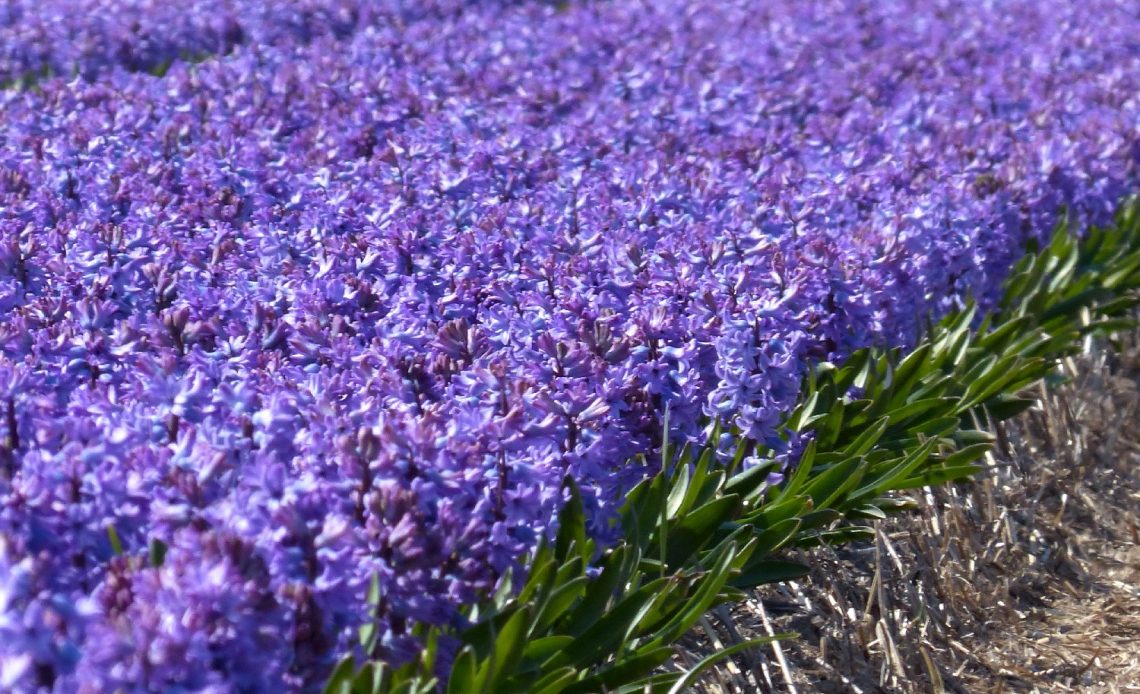

We’re here to help! Wild Yards is a completely free website that is 100% dedicated to helping you create a wildlife-friendly, sustainable yard. Read more
WildYards is reader-supported. When you buy a product through a link on our site, we may earn a comission. Every product is independently selected by our (obsessive) editors and our reviews are unbiased and objective. Read more about our mission or our privacy policy.
Lavender is a delightful herb that will flourish in your garden in the right conditions. With ample sunlight and minimal moisture, some lavender varieties will even grow into hedges – creating an advantageous pollinator magnet and an eye-catching natural perimeter. But – where do you start when planting a lavender hedge?
Growing your own lavender hedge is relatively simple, providing your soil is arid and your plants get plenty of sun. Of course, growing lavender in this style will take a little more patience than simply letting it run wild – here’s what you need to know.
Why should I plant and grow my own lavender hedge?
Lavender on its own is a fragrant herb that attracts hummingbirds, bees, and butterflies, and grown into a hedge, you’ll have a sweet-smelling magnet for all kinds of useful animal visitors. Lavender hedges produce heady smells that appeal to human visitors, too – and when carefully trimmed and styled, can become the centerpiece of any wild yard. Lavender grows in blue, white, and violet – not just purple – and is easy for creative topiarists to shape and style as they wish.
Lavender hedges are great for deterring potentially destructive animal visitors, too. Deer dislike lavender for its smell and texture, and you’ll also ward off and confuse various flies and worms that may eat away at tender vegetables in your garden. Creating a lavender perimeter around sensitive crops is surprisingly simple once you’ve established a well-draining soil bed and a watering regime.
Growing a lavender hedge will provide many plants with a large companion plant that helps to stave off erosion in your soil and keep pollinators fluttering back during drier months. A large hedge positioned appropriately in your garden can also act as a windbreak, ensuring tender plants are safe from heavy weather.
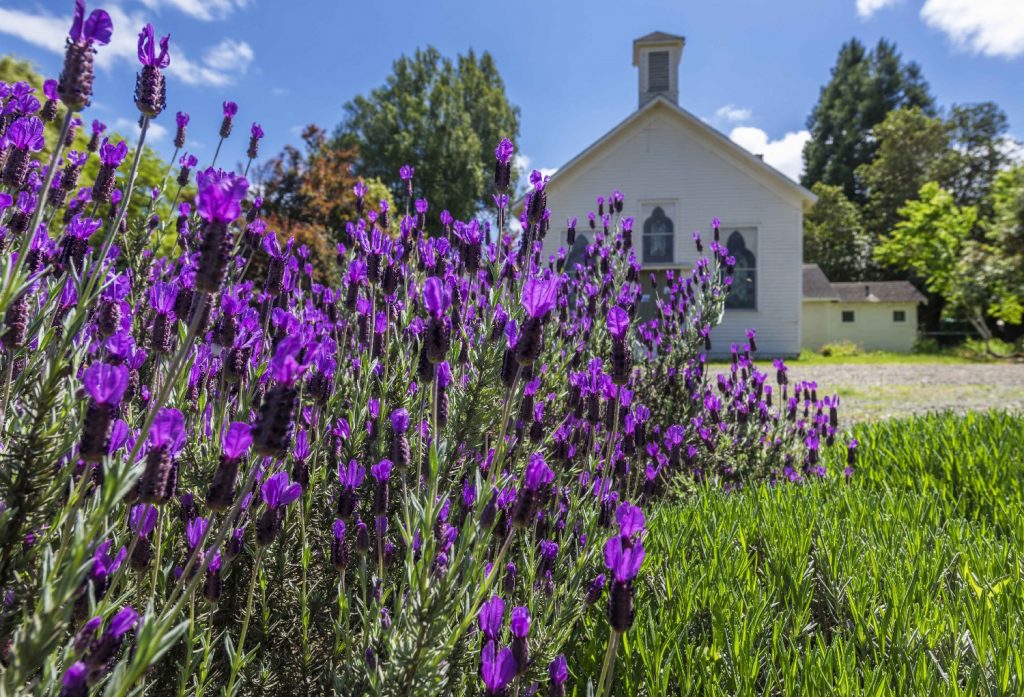
When is the right time to plant a lavender hedge?
Lavender typically sprouts and flowers through the spring, meaning whether you are repositioning existing plants or are growing your lavender hedge from seeds, it’s worth getting started when the soil is warm and dry. This period may vary depending on your USDA zone, but a good rule is to consider starting in spring.
Planning a lavender hedge will take more than simply casting seeds into the soil wherever you see fit, so start looking at different plants and positions around fall heading into winter.
Choosing the right variety
Most lavender will fare well in USDA zones five up to ten, but some are hardier than others and work better in hedge formation. The most popular choice for hedges is English lavender, otherwise known as Lavandula angustifolia. This variety is remarkably laid back and produces an incredible floral scent – and abundant oil. English lavender will withstand plenty of stress, too, and may even survive the winter left outside. This specimen grows in a fairly compact formation, making it instantly viable as hedge material.
If you’d like to move ahead with an English lavender hedge, you can narrow your search even further into different species variations. For the most compact, impressive growth, consider Munstead, Rosea, Hidcote, and Royal Purple varieties. Hidcote, in particular, doesn’t grow too tall (60cm at most) but is thick and bright – great for compact gardens or if you largely want to protect your tender crops. Hidcote’s oil is popularly extracted for various purposes – it’s highly fragrant.
It’s also worth considering Spanish lavender, or Lavandula stoechas, which fares best in hot weather and arid soil. This is a popular choice for hedge builders as it’s one of the fastest and richest bloomers of the common lavender species. Keep in mind, however, that it’s a little more sensitive than its English cousin – avoiding moisture and cold is a must.
Do also consider Lavandula x intermedia, a hybrid of English and Portuguese lavender species. This hybrid isn’t as resistant as its English parent but is popular for hedge growing – as it can grow impressively tall. For example, the Grosso variety of the hybrid can scale heights of up to a meter!
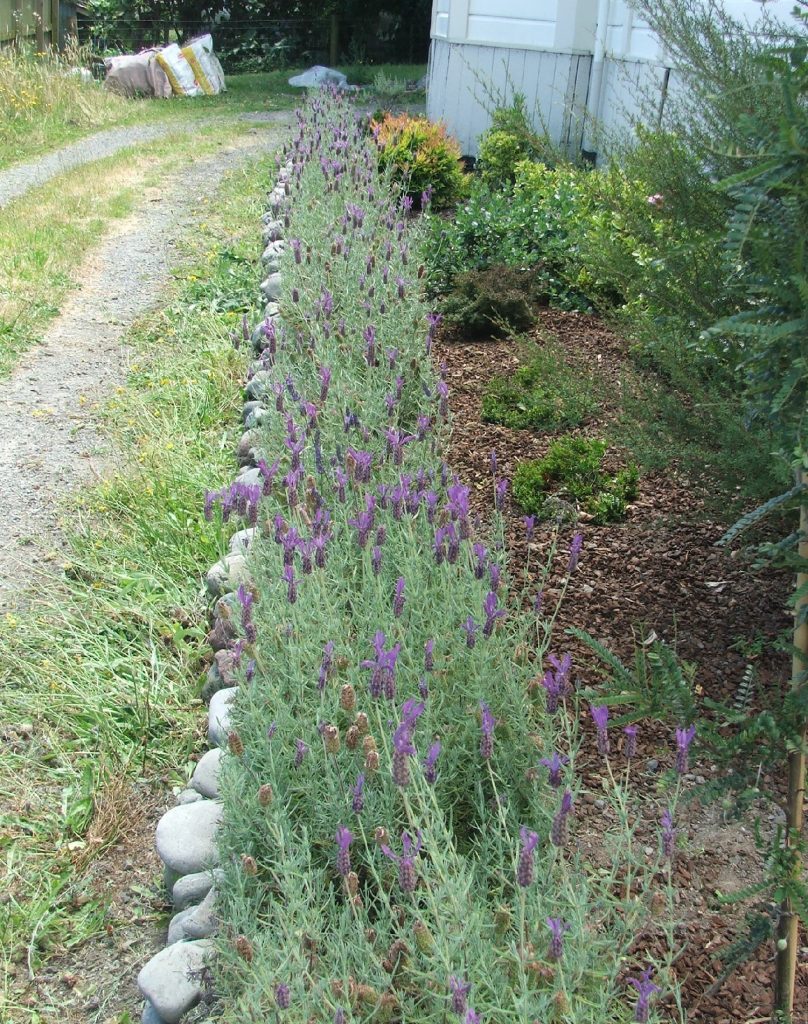
Considering your soil
Lavender requires well-draining soil that should ideally be sandy or dusty in texture. It grows natively in the Mediterranean and therefore hates moisture. Choose a spot with soil that isn’t subject to dampness and can easily drain water when you’re feeding your hedge directly.
It’s also good to consider pH when planting lavender to grow a hedge. Lavender prefers soil at a pH of at least 6.4 heading up to 8.2 (or even more), meaning it’s worth investing in a pH tester (with spike) to place into your plot. Otherwise, test strips you can buy in bulk make a better value purchase in the short term.
Picking the right spot
The biggest rule for picking the perfect lavender hedge spot is to optimize sunlight – despite differences in hardiness, all lavender varieties demand full sun for most of the day. Around 10 hours of sun per day is ideal for optimum lavender growth, if not more. If you’re growing lavender in USDA zones five to nine, you’re in a prime position to grow hardy hedges with lots of blooms.
Space matters when growing lavender hedges, so clear a trench of around 12 inches in width, which you can easily turn and aerate with a tiller and/or spade. Once your soil is nice and loose (so it can allow air to flow and water to drain), it’s time to build a slight ‘ridge’ within your trench.
Your ridge should be around six inches in height, and ideally, you’ll have a rich blend of compost and/or topsoil for your lavender to bed into. If you can, try composting a mix high in nitrogen (for the best growing results). Adding nutrients can help to grow thicker, more compact hedges.
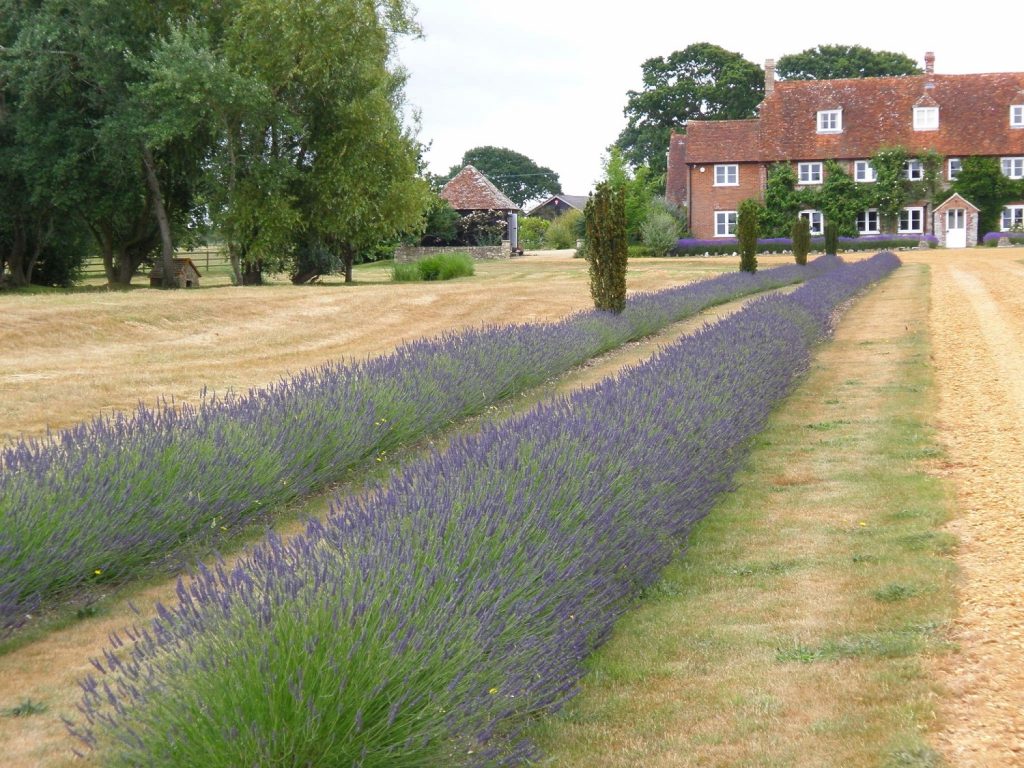
Planting and cultivating your lavender hedge
Whether you’re planting from seed or are moving lavender plants into the ridge, be careful to position them around 12 inches apart towards the center of your bed location. Planting seeds is less time-consuming than replanting mature lavender but can take a little more patience over time.
Space is essential when planting a lavender hedge because this plant – while it grows into a highly compact shape – needs airflow to prevent mold development.
If you’re moving existing lavender to your new hedge spot, massage its roots to loosen it up a little. Root-bound plants are trickier to replant – these are easier to spot as leaves can start to change color and wilt. Once any existing plants are massaged, carefully place them into your bed.
Watering your crop is a must, but only do so until your soil is moist, not waterlogged. From here, you can leave your lavender to propagate and grow into a thick formation – though if growing from seed, remember it’s unlikely you’ll see flowers in the first year of lavender’s life.
It can take a full season of growth for your lavender to start growing ‘together’ and combining, though it may take up to three years for your plants to condense into a ‘hedge’. You’ll usually need to water it once a week, twice if there’s been very little rainfall.
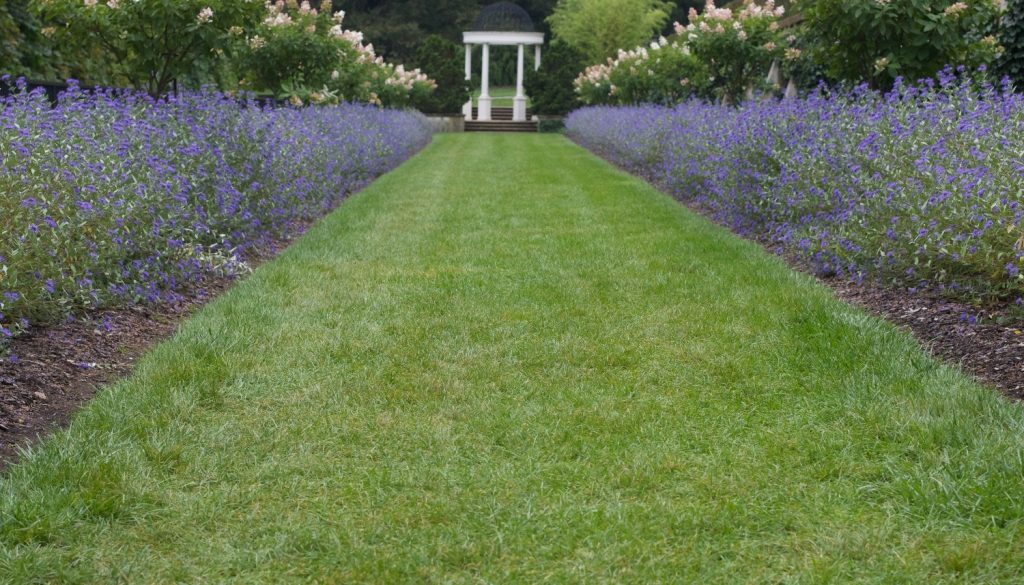
Should I prune my lavender hedge?
Pruning lavender is essential to keep your plants returning after cold winters and encourage flower regrowth from season to season. Pruning is also a concern of style and shape with hedges, and you shouldn’t need to trim your lavender back more than twice a year. The aim is to stop woody stems from emerging – while these will help lavender stalks to stand upright on their own, they are not conducive to the best-looking hedge!
With English lavender, in particular, it’s worth waiting until the fall, or at least until your lavender’s flowers have stopped emerging for the year. Be careful to prune back around 2-3cm down from the leaves, but ensure that you leave a little greenery behind. It’s worth trimming your lavender hedge back again if the weather’s been particularly cold.
Pruning around a third of your hedge at the start of spring, too, will likely help to produce a bushy and visually-impressive lavender crop. Remember to deadhead your lavender, too, so you can keep its flowers springing back.
How to keep your lavender hedge healthy
Lavender hedges are relatively easygoing, providing they have ready access to sun and you only water your specimens occasionally. Pruning is recommended once or twice a year to prevent woody stems from setting in and spoiling your look. You can trim and shape your hedge as you desire – once the plants start to combine, this is a hedge you can leave to be fairly autonomous.
A lavender hedge can add immense value to your garden – visually and in terms of attracting useful pollinators. Building your lavender perimeter will take time and patience initially. Still, you’ll have a reliable, low-maintenance line of defense for crops likely to get eaten by slugs, aphids, deer, and more. It’s worth the wait!
